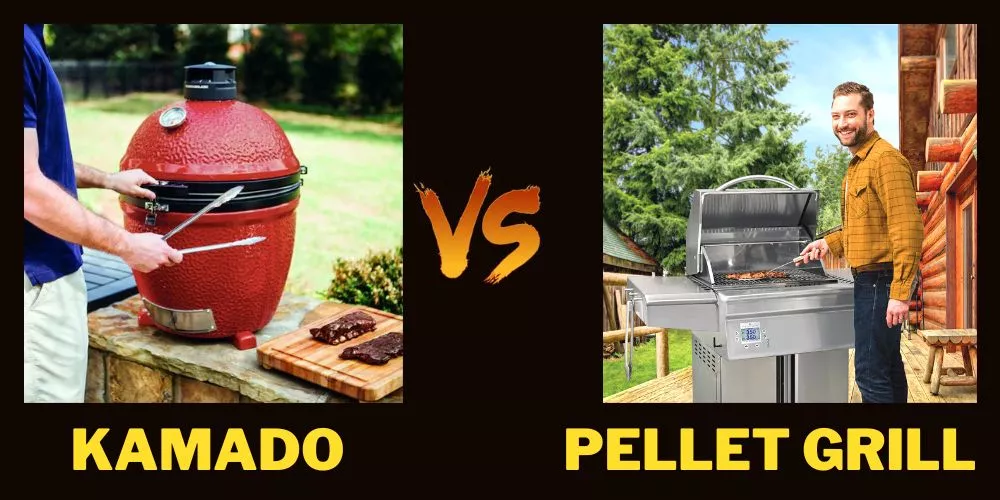Both stainless steel and porcelain grill grates add value to your backyard as the best grillers. Both materials are capable of resisting extreme climatic conditions and hotness.
It’s imperative to understand which grate affects the food’s flavor and how quickly you can grill. Therefore it’s crucial to evaluate your barbecuing ideas before narrowing them down to one.
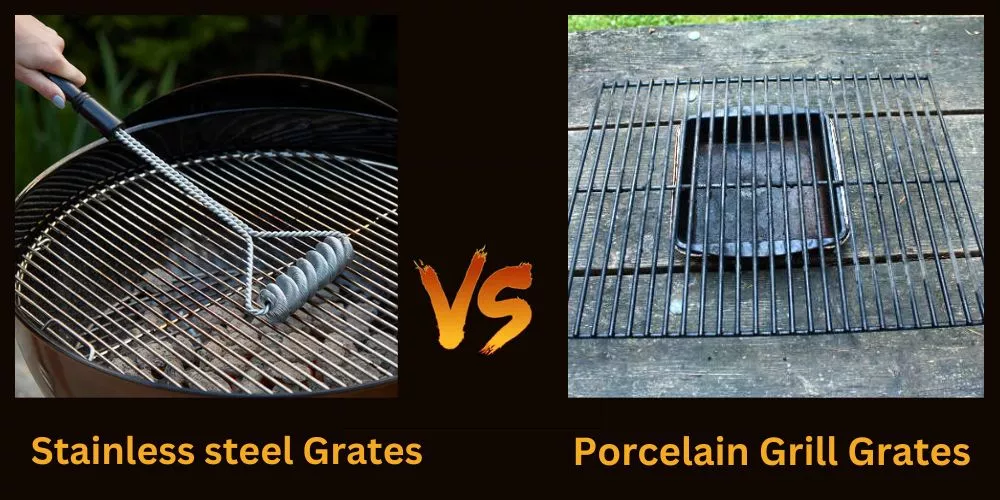
Our extensive research on the topic will help you to understand more about both grills. It will help you to choose the perfect option based on your needs. Without further ado, let’s dive into the details.
Stainless Steel vs Porcelain Grill Grates
Similarities
- Both offer direct and indirect grilling
- Cleaning both is simple
- Can endure extreme climatic conditions and heat
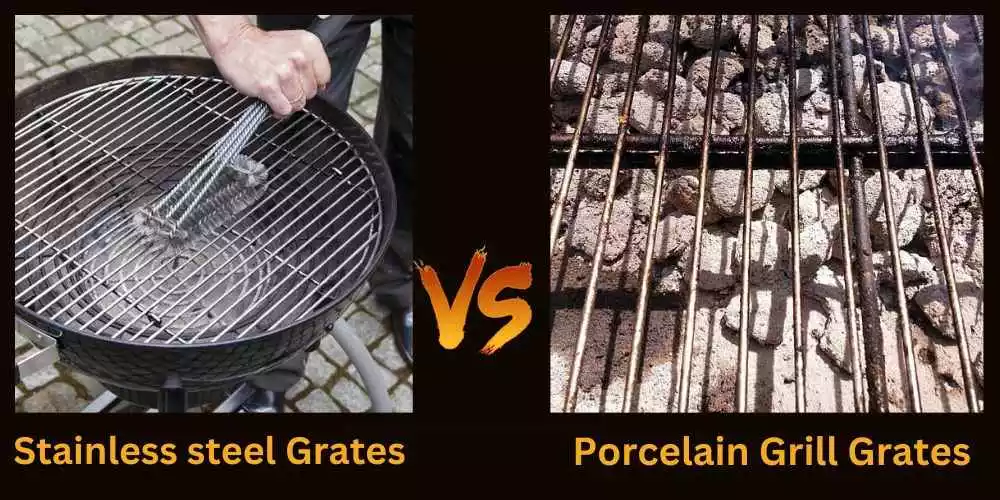
Differences
Stainless Steel Grates
- High maintenance.
- Heats faster.
- Retains heat for a short time.
- Narrow bars.
- Affordable pricing.
Porcelain Grates
- Low maintenance.
- Slow heating.
- Retains heat for a long time.
- Broad and flat bars.
- Expensive pricing.
Pros and Cons of Stainless steel grates
Pros
✅ Retains the flavor.
✅ Hygienic.
✅ Rust and corrosion-free.
✅ Durable and long-lasting.
✅ Easy to clean and maintain.
✅ Heat transfer is quick, resulting in cooking the food faster.
Cons
❌ Poor heat retention.
❌ The grates may distort.
❌ Grates may lose the non-stickiness.
❌ Using them for a long time may lead the grates to lose their smoothness and gain a rough surface.
Pros and Cons of Porcelain grill grates
Pros
✅ Retains heat for a longer time.
✅ Easy cleaning and maintenance.
✅ Non-stick surface.
✅ Elegant appeal.
✅ Rust-free.
Cons
❌ The porcelain coating may chip off.
❌ Grates cannot be seasoned.
❌ Chips in porcelain may make it prone to rust.
❌ Expensive and heavy on weight.
Stainless Steel Grates Usage
Stainless steel grates are light on your wallet. Food doesn’t stick to them due to the anti-stick surface. Due to their rust and corrosion free-property, stainless steel grates last longer. However, appropriate maintenance is essential.
Stainless steel grates absorb heat quickly and retain hotness for a longer time. The quick heating helps to cook the food in less time. Cleaning is easy with stainless steel grates due to their anti-stick surface.
You can cook thick meat cuts with stainless steel grates. But avoid grilling chicken or fish with meat together. These grates have narrow bars, making it simple to grill pizza, mushroom caps, and other big-sized vegetables. Before placing the foot onto the grates, ensure they are heated substantially. Else, you may end up sticking food onto the grates.
Protip:
Owing to the poor heat retention of stainless steel grates, you can optionally buy ceramic briquette trays to help you with appropriate heat retention.
Immediately cleaning the grill after using it is essential. This is to remove the greasy or oily layer that gets deposited onto the grates. Delaying to clean will make it a bit difficult to clean the grates, requiring you to put in the extra effort.
How to clean and maintain Stainless Steel grates?
Use a soft brush to clean the stainless steel grates. Removal of food particles from the surface becomes simple by using a brush. Ideally, clean the grates when they are hot. Once they cool down, it may lead to a punishing exercise to remove the dried food particles.
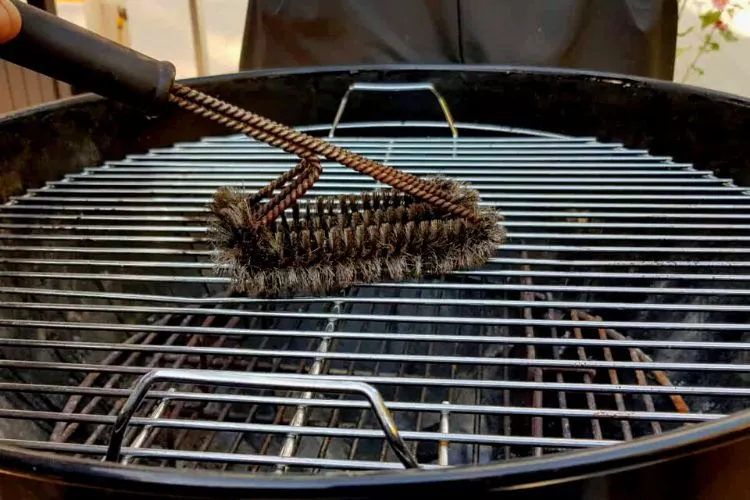
If detailed cleaning of the grates is essential, using baking soda and white vinegar will help. Once you notice the foam-gathering, dust off the food particles stuck to the grates using a wire brush. In case of a greasy grate surface, using a degreaser may ease your problem.
Cleaning stainless steel grates is easy due to their smooth surface. The non-porosity of the metal prevents food particles and juice from permeating into the grates.
Porcelain Grill Grates Usage
These grill grates are made of cast iron with a porcelain enamel coat. Unline the silvery color of stainless steel, porcelain grates are dark with blackish color giving a graceful appearance.
The additional layer slows down the heating of the grates. But on the other side, the heat retention time is longer. Due to the cast iron, these grates are heavier and more costly than stainless steel grates.
However, the durability and quality of porcelain grates justify their price. You can expect to get appropriately seared food when grilled on porcelain grates. High heat retention helps transfer heat to food over time, saving a substantial amount of fuel too. Moreover, you can cook food at lower temperatures to make the most out of it.
You can be confident about the cooking quality, as it will be ideally cooked thoroughly. You may get ideal cooking quality if you use thin cuttings of meat, chicken, and fish. The broad and flat bars allow you to cook small vegetables too.
Porcelain grates are durable, and the coating helps in easy cleaning. You don’t have to repeat the seasoning frequently with porcelain grates. Experts suggest using cooking spray to quickly ready the cooking surface. Moreover, it also simplifies the cleaning of the grates.
The surface of these grates is also non-porous, thanks to the porcelain coating. Food caramelizes when cooked on these grates delivering a better flavor. It is because the grate bars and the food come in contact with each other.
How to clean and maintain porcelain grill grates?
Avoid using brushes with metal bristles or scrapers. It may damage the coating of the grates. These grates also feature an anti-stick surface, making the cleaning process easy. In addition, it helps the grates to resist rust or corrosion. You can use oven or grill cleaners to clean these grates. Ensure the grates are completely dry before putting them again into the grill.
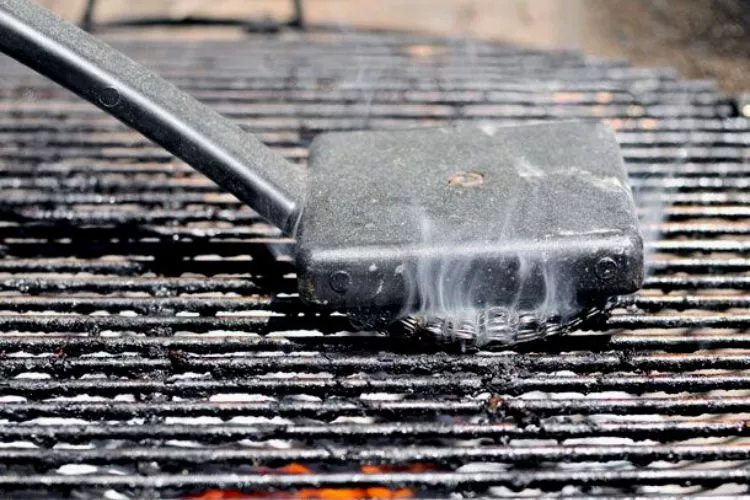
Clean the grates using a brush with stiff bristles gently. Applying force or pressure while brushing the debris off may chip off the coating. The grates will last for years if you maintain them with utmost care. You can use a scouring pad brush with mid-soft bristles to clean hard-to-reach areas.
After cooking, you can clean the grates using a wire brush. In addition, you can apply an oil coat on the grates with a high smoke point. As mentioned above, they must be dried completely before putting them into the grill.
Clean the grates using warm water and dish soap. Use a sponge or soft rages to clean the grill structure. Wipe the inside of the grill using a little damp or dry microfiber cloth once or twice. Once the grate cools down, brush off the burned food using a nylon brush by stroking it diagonally.
You May Also Find Useful: Grill Pan Vs Skillets | Grill Pan Vs Electric Grill | Air Fryer Vs Grill
Frequently Asked Questions (FAQs)
Is a porcelain heat plate better than stainless steel?
If you wish to cook at a lower temperature, then a porcelain heat plate is better than stainless steel. For quicker cooking, you must choose stainless steel.
Does porcelain last longer than stainless steel?
Both of them last longer, however, porcelain grates will last longer than stainless steel.
Is porcelain ceramic better than stainless steel?
The ceramic lifespan is shorter. Moreover, it won’t endure the heat a stainless steel material can. Therefore stainless steel is better than porcelain ceramic.
Conclusion:
When it comes to grills, the grates play a crucial role. Grates are the ones that hold the food during the whole process. We discussed stainless steel grates and porcelain grill grates.
Both grates have their own advantages and disadvantages. Both can combat extreme weather conditions. Stainless steel grates get hot quickly but have poor heat retention. On the other hand, porcelain grates may take time to heat but are good at heat retention.
When it comes to results, both offer almost the same cooking quality, but the winner is porcelain grates. Maintenance-wise, stainless steel steals the show, as it requires little maintenance.
Choose stainless steel if you want to cook your food quickly. And if you want the food to be seared leisurely, but with a better flavor, go for porcelain grates.


